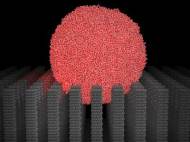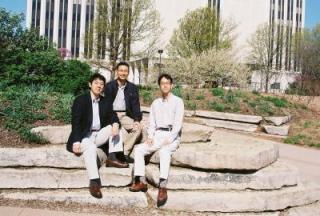Biomimicry could help development of self-cleaning materials
 Humans have always wondered how water beads roll off flowers, as well off caterpillars and some other insects, and how insects like water striders are able to walk on water. It’s a property called super hydrophobia. Self-cleaning counter tops, fabrics, walls, even micro-robots that can walk on water – all those things and more could be closer to reality thanks to research recently completed by scientists at the University of Nebraska-Lincoln and at Japan’s RIKEN institute.
Humans have always wondered how water beads roll off flowers, as well off caterpillars and some other insects, and how insects like water striders are able to walk on water. It’s a property called super hydrophobia. Self-cleaning counter tops, fabrics, walls, even micro-robots that can walk on water – all those things and more could be closer to reality thanks to research recently completed by scientists at the University of Nebraska-Lincoln and at Japan’s RIKEN institute.
“A lot of people study this and engineers especially like the water strider because it can walk on water,” said Xiao Cheng Zeng, Ameritas university professor of chemistry at UNL. “Their legs are super hydrophobic and each leg can hold about 15 times their weight. ‘Hydrophobic’ means water really doesn’t like their legs and that’s what keeps them on top. A lot of scientists and engineers want to develop surfaces that mimic this from nature.”
In nature, organisms like caterpillars, water striders and the lotus achieve super hydrophobia through a two-level structure – a hydrophobic waxy surface made super hydrophobic by the addition of microscopic hair-like structures that may be covered by even smaller hairs, greatly increasing the surface area of the organism and making it impossible for water droplets to stick.
By using the super fast supercomputer at RIKEN (the fastest in the world when the research started in 2005), the team designed a computer simulation to perform tens of thousands of experiments through which they tested how surfaces behaved under many different conditions. Zeng and his colleagues used the RIKEN computer to “rain” virtual water droplets of different sizes and at different speeds on surfaces that had pillars of various heights and widths, and with different amounts of space between the pillars.
What they learned is that there is a critical pillar height, depending on the particular structure of the pillars and their chemical properties, beyond which water droplets cannot penetrate. If the droplet can penetrate the pillar structure and reach the waxy surface, it is in the merely hydrophobic Wenzel state. If it the droplet cannot penetrate the pillars to touch the surface, the structure is in the super hydrophobic Cassie state and the droplet rolls away.
“This kind of simulation — we call it ‘computer-aided surface design’ — can really help engineers in designing a better nanostructured surface,” Zeng said. “In the Cassie state, the water droplet stays on top and it can carry dirt away. In the Wenzel state, it’s sort of stuck on the surface and lacks self-cleaning functionality. When you build a nanomachine — a nanorobot — in the future, you will want to build it so it can self-clean.”
The researchers claim there were 3 main advantages when they performed the experiments on a computer rather then in a laboratory. First, they were able to conduct thousands more repetitions than would have been possible in a lab. Second, they didn’t have to worry about variables such as dirt, temperature and air flow. Third, they could control the size of droplets down to the exact number of molecules, whereas in a laboratory experiment the droplets would unavoidably vary by tens of thousands of molecules.
“We wanted to design a grand-challenge project so we could take advantage of the RIKEN super computer,” Zeng said. “We thought this was an interesting project and we need a very, very fast computer to deal with it. I also have to acknowledge the Nebraska Research Initiative, the Department of Energy and the National Science Foundation. The NRI is great because it allows me to do highly risky research, to develop this kind of challenging project.”










Self cleaning materials is interesting.
In Philippines I saw clothes made from SISAL AGAVE fibre. The brand name is DIP DRY. The Dirt on the fabric(may be shirt) can be easily cleaned by dipping it in soap water and weaving it couple of times. Water won’t stick to it.
Dr.A.Jagadeesh Nellore(AP),India